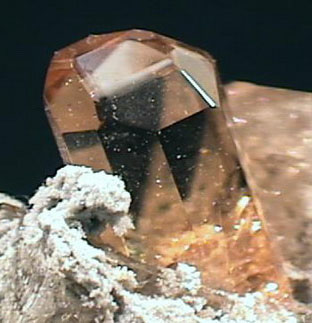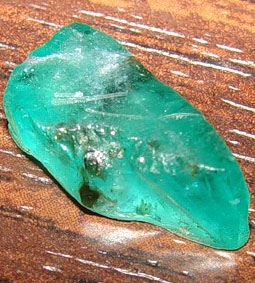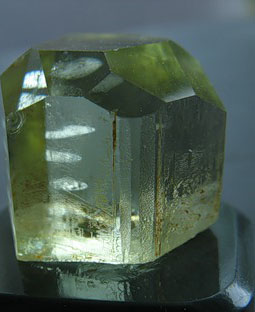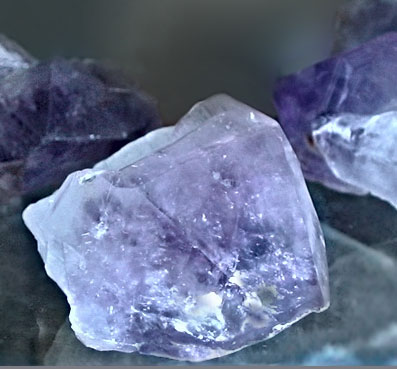




Natural crystals
Among the different rocks stones meet crystal (usually igneous and volcanic rocks) and non-crystalline (usually sedimentary). Particular interest crystalline rocks stones (or natural crystals), which will be discussed.
Among the exhibited in shops to display precious and semi-precious stones (presented in the form of natural crystals or sedimentary rocks stones) some of them have the label "natural stone". This means that such stones are found in nature, processed and offered for sale. Then what are the other stones without plates? This minerals and stones-grown in the plant! (or artificial crystals). Can be grown amethyst, citrine, marioni that will not give natural minerals. But the cost of such minerals and stones will be much lower! (of course this applies not to all minerals grown artificially)
Growing synthetic crystals interested people in the IX century. First and foremost interest is the precious minerals: ruby and sapphire. Now these minerals are produced million carats every year!
Artificial crystal stones produced from melts, solutions, out of gas, but of course, for each mineral has its own mode of production, its technological feature. (With this feature, the reason for such a diversity of minerals in nature!) For example, crystals of quartz (rock crystal, amethyst, Morion) grow in aqueous solutions of natural mineralizers. This is evidenced by the chemical composition of quartz. For growing artificial crystal stone natural conditions are also modeled artificially!
Interesting question about the speed of growth. There is no definite answer. The Rate of growth of artificial crystals stones depends on growth conditions, the depth of the breed and pressure, the natural concentration of the solution, which rock breed surrounding the growing crystal, and much more. If we consider that, in the average case, the growth of minerals may occur over the years and centuries, but creating artificial conditions for growing crystals stones, received almost "cosmic" speed - the speed of our hair growth! If describe the process of artificial cultivation of crystals stones, raw materials (such as ugly, destroyed quartz) is destroyed in alkali to the molecular state and then from the molecules of silica (SiO2) is perfectly correct transparent new crystal. This is done using a special seed. The seed for growing artificial minerals - transparent thin elongated in the length of the plate made of the same synthetic crystals. This is controlled by the corresponding temperature, pressure, concentration of the solution. The slightest deviation from the set parameters and the crystal will be spoiled! Another important condition for growing artificial stones is the temperature difference at the bottom and top of the tank where they grow. When this occurs, the transfer of molecules in solution and their entry to the seed.
Artificial crystals of amethyst
Artificial precious and semi-precious stones such as amethysts, grown on the plant, do not differ from their famous Ural and Brazilian counterparts: either externally or by the structure.
Surprising wealth of varieties of crystals, their colors, and the size! such jewelry will not see often! Lemon yellow citrine, pale blue and bright blue perunit, purple amethyst, smoky Topaz, almost black Morion, blue turquoise, aquamarine beryl, amber brown, Topaz, very beautiful!
Even in ancient times stones were attributed to the most amazing properties. Amethyst has long been regarded as an amulet against drunkenness, intoxication, and drove away from the owners, who had bad thoughts, did people good and reasonable. Women especially appreciated it as a remedy for wrinkles and freckles. In the middle centuries, amethyst was given only favorites. Amethyst are wear people, who borned in February.
Fame amethyst due to its purple color different thickness and colors. Could not understand the nature color of the stone. First time, it was assumed that this painting gives the stone manganese. But to reproduce this color by artificial means - could not.
Later it became known that the amethyst color (amethyst is quartz) caused by the presence of ions of tetravalent iron. These ions enter the lattice and replace silicon in it.
During the experiments, it was found that if the iron ions occupy a different position, you will get a different color of crystal. Much depends on the concentration of the solution in which grow artificial crystals. The weaker concentration the impurities of iron paint quartz in brown color, the stronger concentration the color becomes green. Color can be changed and choose the shades! But the technology is colored quartz is not widespread. Firstly, salts of metals in natural minerals, not "wanted" to dissolve in alkalis; secondly, the growing crystals "get away from" some ions (color additives). That is why in many countries growing technology artificial crystal stones and not established.
New methods have been developed and are known today 2 technology. Amethysts are grown by crystallization from solution in the autoclave. Technological growth cycle lasts 2 months. Amethysts are got colorless and almost and no differents from the most common quartz. For the manifestation of colouring grown artificial amethyst it is subjected to gamma or x-ray irradiation (all natural rock was exposed, due to radiation). By the way, fields of natural amethyst crystals are located in areas where there is an increased level of radiation.
Price amethyst largely depends on the color of the stone. Pale lilac or light purple minerals typically tens of times cheaper than deep purple. Minerals that are grown in plants have a deep purple color.
Surprisingly, in the same conditions are different minerals and amethyst, and citrine. All depends on the orientation of plates and from what direction of the growth. For example, amethyst needs the parallel faces of plate direction. Impurities chemical compounds come in to the crystal lattice different depending on the orientation of the plates. In the end, different minerals, different color!
Dark smoky, almost black color Morion is explained by the presence of aluminum, in addition, the grown crystals necessarily irradiated.
Very beautiful quartz blue (perunit). Its color due to the presence of cobalt ions. It is possible to get it shades from pale blue to bright blue (cornflower). But in the nature this variety of quartz is not found.
From yellow or yellow-green beryl after heating get crystals marvelous beauty with a bluish or bluish-green color. After this treatment, the stone is called aquamarine.